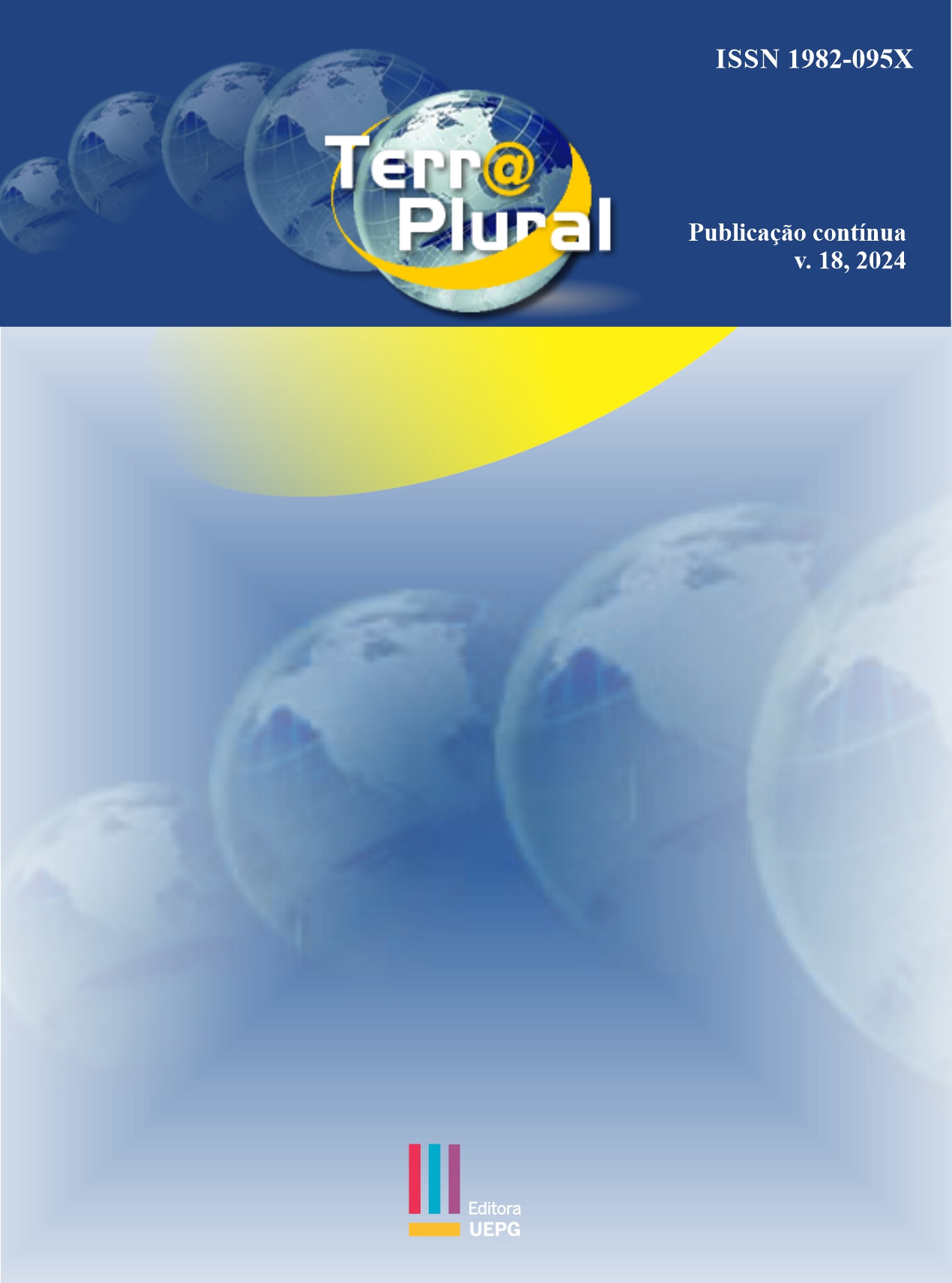Spatio-temporal Distribution of Aboveground Forest Biomass and Carbon in Tropical Dry Forest under Anthropogenic Pressure, Brazil
DOI:
https://doi.org/10.5212/TerraPlural.v.18.2423225.014Keywords:
Geostatistics, Kriging, Semi-arid, Interpolation TechniquesAbstract
The present study aimed to characterize the spatiotemporal variability of aboveground biomass and carbon in two fragments of Dry Tropical Forest in the Brazilian semi-arid region using the kriging interpolation technique. One fragment experienced vegetation suppression for alternative land use, while the other had no history of use or wood extraction. The vertices of 80 plots (20 m x 20 m) were georeferenced, and biomass and carbon were estimated using allometric equations adjusted for Caatinga species. Spatial analyses and mapping of aboveground biomass and carbon were performed using GS+ software, with semivariograms fitted using spherical, exponential, and Gaussian models. The research aims to fill gaps regarding the impacts of inadequate forest exploitation in Dry Tropical Forests, specifically on the spatiotemporal distribution of biomass and carbon, as anthropogenic pressure can cause significant environmental degradation, resulting in reduced stocks. This investigation seeks to elucidate these dynamics and provide insights for management and conservation strategies based on robust empirical data, in addition to answering the following questions: Does the history of anthropogenic interventions in Dry Tropical Forest areas cause variations in the spatial distribution of biomass and carbon stocks that can be detected by the kriging method? Which attributes related to conservation and anthropogenic use reflect the spatial distribution of biomass and carbon stocks in Dry Tropical Forest areas? The results showed a strong spatial dependence of biomass and carbon stocks in both studied areas, indicating the influence of the areas’ use history. The conserved fragment presented a more homogeneous spatial distribution, suggesting that the selective and unauthorized wood extraction was dispersed throughout the area.
Downloads
Downloads
Published
How to Cite
Issue
Section
License
Copyright (c) 2024 Gabriela Salami, Rinaldo Luiz Caraciolo Ferreira, José Antônio Aleixo da Silva, Fernando José Freire, Emanuel Araújo Silva, Marco Antonio Diodato, Dhonatan Diego Pessi

This work is licensed under a Creative Commons Attribution-NonCommercial-NoDerivatives 4.0 International License.
Revista Terr@ Plural will obtain the auctorial rights for all published texts. This also implies that the text can be published anywhere in the world, including all rights on renewal, expansion, and dissemination of the contribution, as well as other subsidiary rights. The authors get permission to publish the contribution in other media, printed or digital, it may be in Portuguese or translation since the publication is credited to Revista Terr@ Plural. It allows the self-archiving of published articles in institutional repositories, thematic repositories, or personal web pages in the pdf version downloaded from the journal's site.















